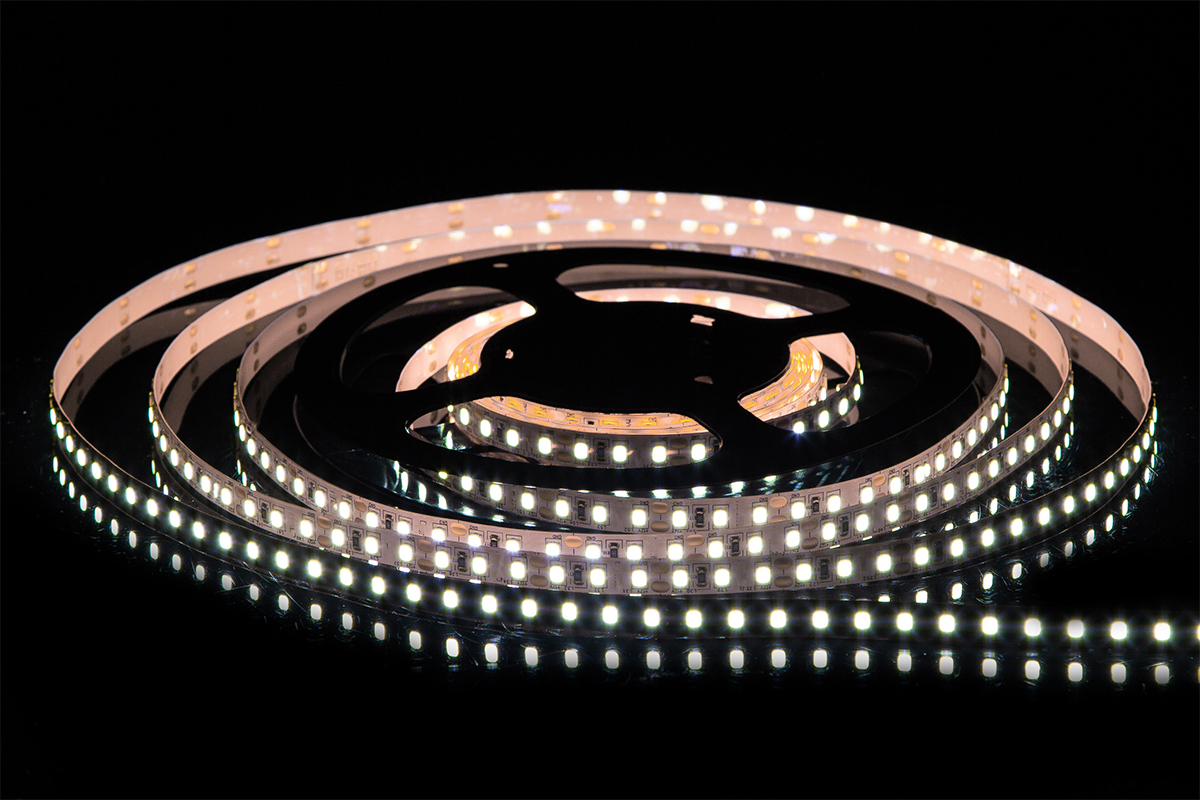
A tunable white LED strip light is a linear light module which is fabricated from a flexible printed circuit board and is capable of emitting white light in a continuously adjustable range of color temperatures. Tunable white refers to the capability of modulating correlated color temperature (CCT) of a light source, with its luminous intensity controlled independently. Creating an environment that is more conducive to health, comfort, or productivity can be accomplished through adjustment of spectral composition and intensity of the light. Dynamic tuning of the white light spectrum is increasingly being used as a design tool to adjust for aesthetics, physiological effects, preference, or artistic expression.
Tunable white lighting is not a new invention but, rather it is rapidly gaining popularity. It has become more important than ever with the discovery of the biological effects of light as well as the introduction of LEDs. Today most tunable white LED strips are designed to support the concept of human centric lighting (HCL). HCL is used to reinforce the body’s circadian rhythm and the natural cycle of biological functions. It can simulate the changing color temperature and intensity of natural daylight to evoke particular human biological responses. Color temperature provides a reference point that help users intuitively know the color of light. It generally corresponds to the proportion of blue wavelengths in the visible spectrum. Cool white light contains a high percentage of blue radiation which promotes the release of serotonin and cortisol while at the same time suppressing melatonin production. The blue-depleted warm white light will not disrupt the normal release of melatonin. Nocturnal melatonin release is a vital protective mechanism for the human body.





